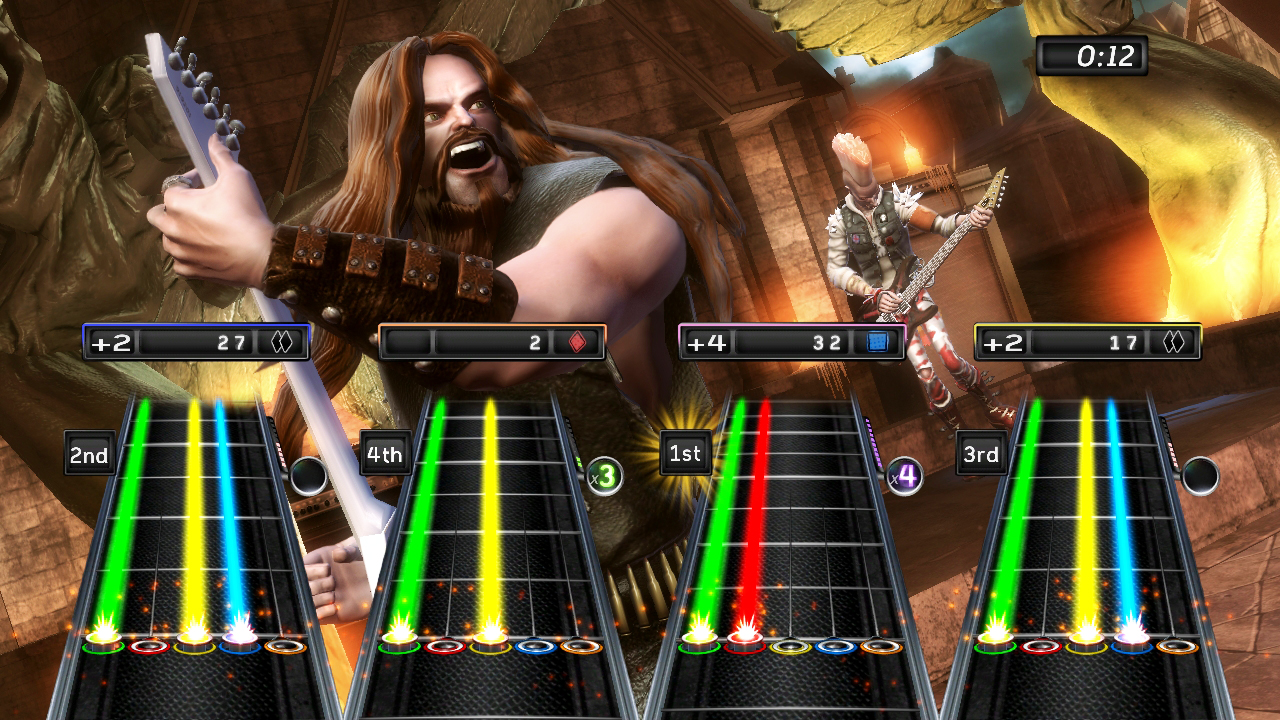Damn Tetris blocks. Seeing them everywhere. Can’t sleep. Can’t turn them off.
For most of us, gaming offers a momentary escape from the real world, but for some, the distinction between onscreen actions and reality can blur. A recent study highlights how gaming can seriously affect our senses and offers a glimpse through the eyes of gamers whose brains keep on playing.
In the study, gamers talk about seeing a grenade icon from Call of Duty while out shopping and nearly commando-rolling away, a bedroom turning into a Minecraft-style grid, and a wide range of visual distortions that last long after a game is back in its box.
Not everyone is equally susceptible to these effects — likened to the symptoms of conditions such as epilepsy and schizophrenia — but should gamers experiencing them be concerned for their mental and physical well-being?
And does the game industry need to take notice of this research?
The researcher
 Psychologist Angelica Ortiz de Gortari (pictured) has investigated what she calls Game Transfer Phenomena (GTP) since 2010. These are typically visual after-effects, pseudo-hallucinations, and misperceptions that tend to get worse with prolonged exposure to video games.
Psychologist Angelica Ortiz de Gortari (pictured) has investigated what she calls Game Transfer Phenomena (GTP) since 2010. These are typically visual after-effects, pseudo-hallucinations, and misperceptions that tend to get worse with prolonged exposure to video games.
Not limited to just the retained image of shapes seen on the back of the eyelids, commonly called the “Tetris Effect” — after Alexey Pajitnov’s seminal block-puzzle game — GTP can also be triggered by external stimuli and bring images, sounds, or distortions from games into the real world.
Ortiz de Gortari is a gamer herself and is keen that her work can help provide a greater understanding of the effect that video games can have on our minds, for better or worse.
“It is important to start to research with the video games we have today,” she told me via email, “to be prepared for the challenges the mind will affront due to the technologies that are still to come.”
What some gamers are seeing
Ortiz de Gortari’s most recent research paper, written with fellow psychologist Dr. Mark Griffiths, analyzed and classified reports of GTP. It examines a total of 656 experiences from 483 gamers across 54 online forums.
The types of experience are categorized as digitally induced images, seen on the back of the eyelids or projected into the environment; perceptual distortions, such as motion effects and time distortions; and visual misperceptions, where gamers incorrectly identified ambiguous stimuli as game-related objects.
Some of the most arresting examples are below:
Digitally induced images:
“After a long [Call of Duty:] Black Ops session, I saw a red player tag above a woman riding a bicycle. Fortunately, I didn’t have my gun on hand.” (Max4)
“Playing so much Rock Band, some songs make me see green, red, yellow, blue, and orange notes in my vision.” (Mayaz)
Perceptual Distortion:
“For the week or so before, I have been playing an old Final Fantasy game. Suddenly, during a lecture, I realized that the teacher’s head became pixelated. I was tired. I stared at him for some time, and then nothing he said made any sense.” (Joey)
“I played Minecraft for 72 hours straight. I went to bed, but I could not sleep. I turned the light on and looked around. Everything was on a square. [A] grid … I started freaking out, and I moved my furniture around to make it fit perfectly on the grid. My dresser did not fit on a square, and I went to bed crying.” (Sha)
Visual misperceptions:
“More recently with Left For Dead 2. I was at a store, and they had a frying pan on display; I could almost see a silhouette of the damn thing, and I was actually going to pick it up.” (Jenice)
“For minutes, I would confuse airplanes in the sky for [unmanned aerial vehicles] in [Call of Duty:] Modern Warfare 2.” (Fillipes)
Should gamers be concerned?
The sensory effects reported in this study are similar to some symptoms of pathological conditions such as photosensitive epilepsy, migraine aura, and schizophrenia. “For this reason,” says Ortiz de Gortari, “one of the main goals of the GTP studies is to raise awareness, explain and demystify these experiences so gamers don’t interpret GTP as pathological.”
That isn’t to say gamers should ignore them.
Ortiz de Gortari says that while GTP effects usually last only a few seconds or minutes, these experiences should concern gamers if they occur over and over or if the effects last for prolonged periods of time. She says it’s important for gamers to reflect on their gaming habits and ask themselves if the GTP are causing distress, affecting day-to-day life, or causing them to question their own mental health.


